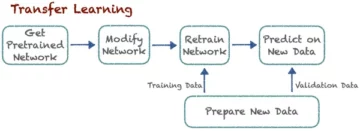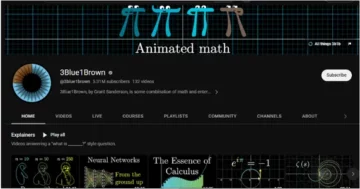Introduction
Today, user feedback is invaluable for developers and companies aiming to refine their products and services. The ability to sift through vast amounts of user-generated feedback efficiently and effectively is crucial for driving innovation and meeting user needs. This challenge has led to the development of AllHands, an innovative framework designed by a collaborative team from Microsoft and various academic institutions, as detailed in their comprehensive research paper by Microsoft. AllHands stands out as a transformative solution in feedback analysis, leveraging Large Language Models (LLMs) to offer a nuanced, user-friendly approach to deciphering the wealth of information contained in user feedback.

Table of contents
Per the research paper, here is the background and related work of AllHands:
Current Methodologies in Feedback Analysis: Classification, Topic Extraction, and Insight Extraction
Classification and Topic Extraction are fundamental to understanding user feedback. Classification sorts feedback into predefined categories like sentiment or type, enabling focused analysis, while topic extraction identifies the main themes through unsupervised learning, setting the stage for deeper understanding. Building on these, insight extraction leverages analytical techniques to transform structured feedback into actionable advice for product enhancement and addressing user concerns. However, these traditional methods grapple with challenges such as the need for extensive labeled data and the complexity of drawing out coherent topics that truly reflect the feedback’s content, alongside the labor-intensive nature of manual insight derivation.
The Role of Large Language Models (LLMs) in Enhancing Feedback Analysis
Recent advancements in Large Language Models (LLMs) offer promising solutions to the limitations of traditional feedback analysis methods. LLMs elevate topic extraction through abstractive summarization, producing comprehensive and human-readable summaries that encapsulate feedback themes, thereby improving the interpretability of data. Moreover, LLMs streamline insight extraction by interpreting feedback and responding to analytical queries in natural language, making feedback analysis more accessible to a broader audience and expediting insight generation.
AllHands: An Overview
The AllHands framework represents a pioneering stride in feedback analysis, leveraging the advanced capabilities of large language models (LLMs) to navigate user feedback’s vast and complex terrain. This section delves into the foundational concept and core objectives that guide the AllHands framework and the strategic integration of LLMs to enrich feedback analysis.
Concept and Objectives of the AllHands Framework
AllHands emerges from the imperative need to bridge the gap between the growing volume of user feedback and the actionable insights that can be gleaned from it. The framework is designed to transform unstructured feedback into structured insights through advanced natural language processing and machine learning techniques. At its core, AllHands aims to fulfill several key objectives:
- Efficiency in Feedback Analysis: Automating the classification, topic extraction, and insight generation processes will significantly reduce the time and effort required to analyze large volumes of feedback.
- Enhanced Accuracy and Nuance: Understanding the nuanced meanings within user feedback will improve the accuracy of feedback categorization and the relevance of extracted topics.
- User-friendly Analysis: To enable stakeholders, including those without technical expertise, to query feedback data in natural language and obtain comprehensive, multi-modal responses.
AllHands aspires to streamline the product development process by achieving these objectives, enabling a more responsive and user-informed approach to software improvement.
The Design of AllHands
AllHands introduces a novel framework encompassing feedback classification, abstractive topic modeling, and a natural language-based query system. At its core, AllHands transforms unstructured feedback into a structured format, enriching it with actionable insights.
Initially, feedback is collected and fed into the system, where it undergoes preliminary classification to sort feedback into broad categories. This classified feedback enters the topic modeling phase, where the main themes and ideas are extracted. Each piece of feedback is augmented with these extracted topics, enriching the data with meaningful tags that facilitate deeper analysis. The augmented feedback data is stored in a structured format and is ready for query and analysis through the AMA feature. This architecture optimizes the data flow and ensures that each piece of feedback is maximally utilized to generate comprehensive insights. This transformation involves several key components:
- Feedback Classification: LLMs are utilized to categorize feedback into predefined dimensions with high accuracy, using in-context learning to adapt to the feedback’s specificities without requiring extensive labeled datasets or domain-specific model training.
- Abstractive Topic Modeling: Moving beyond traditional keyword-based topic extraction, AllHands employs LLMs to generate abstractive summaries that capture the essence of feedback themes. This approach facilitates the extraction of coherent and meaningful topics, improving the interpretability of the analysis.
- Insight Extraction: AllHands’ “Ask Me Anything” (AMA) feature leverages LLMs to interpret natural language queries from users, translating these inquiries into executable code that operates on structured feedback data. The LLMs enable the delivery of insights through text, code outputs, tables, and even images, accommodating a wide range of analytical questions and providing users with a versatile, interactive analysis tool.
Evaluating AllHands
To demonstrate the effectiveness and capabilities of the AllHands framework, a comprehensive evaluation was conducted, examining its performance in feedback classification, abstractive topic modeling, and the utility of the “Ask Me Anything” (AMA) feature. This evaluation is crucial for establishing the framework’s practical applicability and advancements over existing methodologies. Using diverse datasets from various sources and languages, the evaluation measured quantitative metrics like accuracy and user satisfaction, along with qualitative factors such as usability and user experience, demonstrating AllHands’ practical utility and improvements over existing methods.
Performance in Feedback Classification and Abstractive Topic Modeling
The performance in feedback classification and abstractive topic modeling has been quite promising:
- Feedback Classification: The Microsoft AllHands framework demonstrated superior performance in feedback classification, significantly outperforming traditional models. By leveraging Large Language Models (LLMs) for in-context learning, AllHands achieved high levels of accuracy in categorizing feedback into predefined dimensions. This advancement is particularly notable in handling diverse and nuanced feedback, where AllHands’s classification capabilities proved robust and adaptable.
- Abstractive Topic Modeling: Compared to keyword-based topic extraction methods, AllHands’s abstractive topic modeling approach yielded more insightful and meaningful topic representations, enhancing the framework’s overall utility in feedback analysis.
Threats to Validity and Limitations
While thorough and innovative, the development and evaluation of the Microsoft AllHands framework entail certain validity concerns and limitations. These aspects are critical to understanding the framework’s current capabilities and potential areas for enhancement.
Addressing Internal and External Validity Concerns
Addressing internal and external validity concerns is essential to ensure the credibility and generalizability of research findings:
- Internal Validity: Internal validity concerns primarily revolve around the accuracy and reliability of the AllHands framework’s processing and analysis functions. These concerns are addressed through rigorous testing methods like cross-validation and advanced LLMs, ensuring consistent and error-minimized outcomes.
- External Validity: External validity relates to the generalizability of the AllHands framework to real-world feedback analysis scenarios. Its diverse evaluation datasets and flexible design aim to ensure broad applicability. Yet, continued efforts to extend its use and prove its effectiveness across more domains are crucial.
Limitations of the AllHands Framework and Areas for Future Improvement
Despite its strengths, the Microsoft AllHands framework faces limitations, highlighting areas for growth and innovation:
- Scalability and Efficiency: AllHands excels in feedback analysis but must evolve to efficiently process growing data volumes without losing performance, emphasizing the need for scalability improvements.
- Depth of Insight Extraction: The AMA feature boosts user interaction, yet extracting deeper insights from complex feedback requires further refinement in analytical methods to enhance AllHands’ insight depth.
- Multilingual and Multicultural Adaptability: As software products reach a global audience, AllHands must better accommodate diverse languages and cultural contexts, underscoring the importance of expanding its multilingual and multicultural analysis capabilities.
- Integration with Development Processes: For broader practical use, AllHands seeks to integrate more seamlessly with software development and customer management tools, necessitating the development of compatible plugins or APIs.
Addressing these areas is crucial for AllHands’ ongoing development and wider application. Future efforts will leverage new technologies and user feedback to refine and expand the framework’s feedback analysis capabilities.
Practical Implications and Use Cases
The Microsoft AllHands framework introduces a groundbreaking approach to feedback analysis, significantly impacting software development practices and product improvement processes. Below, we explore AllHands’ practical applications in real-world scenarios and present case studies that illustrate its transformative impact.
Application of AllHands in Real-world Software Development Scenarios
Here are some real-world scenarios where AllHands can be applied effectively:
- Agile Development and Iterative Feedback Integration: Rapid iteration and user feedback integration are paramount in agile development environments. AllHands facilitates this process by quickly analyzing vast feedback, enabling development teams to swiftly respond to user needs and preferences. This rapid feedback integration ensures product development always aligns with user expectations, enhancing product relevance and user satisfaction.
- Quality Assurance and Bug Tracking: AllHands significantly streamlines the identification and categorizing of bug reports from user feedback. By accurately classifying feedback and extracting relevant topics, AllHands helps QA teams prioritize issues based on frequency and impact, allowing for more efficient bug tracking and resolution.
- Feature Request Analysis and Roadmap Planning: AllHands’s ability to extract and summarize user sentiment and feature requests from feedback plays a crucial role in roadmap planning. By understanding the most requested features and users’ pain points, product managers can make informed decisions about future updates and enhancements, ensuring that development efforts are strategically aligned with user demands.
Expanding the Framework to Accommodate More Diverse Data Sources and Feedback Types
- Integration with Multilingual and Multicultural Feedback: Recognizing the global nature of digital products, AllHands plans to expand its capabilities to include multilingual and multicultural feedback analysis. By accommodating a broader range of languages and cultural contexts, Microsoft AllHands will enable businesses to gather and analyze feedback from a wider user base, ensuring products are refined and improved with a truly global perspective in mind.
- Incorporating Various Feedback Channels: Future versions of Microsoft AllHands aim to integrate with various feedback channels, including social media platforms, forums, email, and customer support tickets. This expansion will provide a more comprehensive view of user feedback, capturing insights from every corner of the user experience. By analyzing feedback across these diverse channels, AllHands can help businesses identify consistent themes and areas for improvement, ensuring no valuable feedback is overlooked.
- Leveraging Real-time Feedback Analysis: Developing real-time feedback analysis capabilities is another exciting avenue for Microsoft AllHands. This enhancement would allow businesses to act more swiftly on user feedback, addressing issues and implementing improvements in near real-time. Real-time analysis can be valuable for identifying and mitigating emerging issues before significantly impacting user satisfaction.
Conclusion
In conclusion, Microsoft’s AllHands framework heralds a new era in feedback analysis by harnessing the power of Large Language Models (LLMs) to transform vast and varied user feedback into actionable insights. By automating classification, enhancing accuracy with nuanced analysis, and offering a user-friendly interface for stakeholders, AllHands significantly streamlines the product development cycle. The framework’s successful application in real-world scenarios and its commitment to future enhancements underscore its potential to revolutionize how companies engage with user feedback. As AllHands continues to evolve, its impact on software development, quality assurance, and roadmap planning is poised to grow, making it an invaluable tool for businesses aiming to stay responsive to user needs and preferences.
- SEO Powered Content & PR Distribution. Get Amplified Today.
- PlatoData.Network Vertical Generative Ai. Empower Yourself. Access Here.
- PlatoAiStream. Web3 Intelligence. Knowledge Amplified. Access Here.
- PlatoESG. Carbon, CleanTech, Energy, Environment, Solar, Waste Management. Access Here.
- PlatoHealth. Biotech and Clinical Trials Intelligence. Access Here.
- Source: https://www.analyticsvidhya.com/blog/2024/03/microsofts-allhands-aims-to-transform-feedback-analysis/
- :has
- :is
- :where
- a
- ability
- About
- academic
- accessible
- accommodate
- accommodating
- accuracy
- accurately
- achieved
- achieving
- across
- Act
- actionable
- adapt
- adaptability
- addressed
- addressing
- advanced
- advancement
- advancements
- advice
- agile
- aim
- Aiming
- aims
- aligned
- Aligns
- allow
- Allowing
- along
- alongside
- always
- AMA
- amounts
- an
- analysis
- Analytical
- analyze
- analyzing
- and
- Another
- APIs
- Application
- applications
- applied
- approach
- architecture
- ARE
- areas
- around
- AS
- aspects
- aspires
- assurance
- At
- audience
- augmented
- automating
- Avenue
- background
- base
- based
- BE
- been
- before
- below
- Better
- between
- Beyond
- boosts
- BRIDGE
- broad
- broader
- Bug
- Building
- businesses
- but
- by
- CAN
- capabilities
- capture
- Capturing
- case
- Case Studies
- categories
- categorize
- categorizing
- certain
- challenge
- challenges
- channels
- classification
- classified
- code
- COHERENT
- collaborative
- collected
- commitment
- Companies
- compared
- compatible
- complex
- complexity
- components
- comprehensive
- concept
- Concerns
- conclusion
- conducted
- consistent
- contained
- content
- contexts
- continued
- continues
- Core
- Corner
- Credibility
- critical
- crucial
- cultural
- Current
- customer
- Customer Support
- cycle
- data
- datasets
- decisions
- deeper
- delivery
- delves
- demands
- demonstrate
- demonstrated
- demonstrating
- depth
- Design
- designed
- detailed
- developers
- developing
- Development
- development teams
- digital
- dimensions
- diverse
- domains
- drawing
- driving
- each
- effectively
- effectiveness
- efficiency
- efficient
- efficiently
- effort
- efforts
- ELEVATE
- emerges
- emerging
- emphasizing
- employs
- enable
- enabling
- encompassing
- engage
- enhance
- enhancement
- enhancements
- enhancing
- enrich
- enriching
- ensure
- ensures
- ensuring
- Enters
- environments
- Era
- essence
- essential
- establishing
- evaluation
- Even
- Every
- evolve
- Examining
- exciting
- existing
- Expand
- expanding
- expansion
- expectations
- experience
- expertise
- explore
- extend
- extensive
- external
- extract
- extraction
- faces
- facilitate
- facilitates
- factors
- Feature
- Features
- Fed
- feedback
- findings
- flexible
- flow
- focused
- For
- format
- forums
- foundational
- Framework
- Frequency
- from
- Fulfill
- functions
- fundamental
- further
- future
- gap
- gather
- generate
- generation
- Global
- global audience
- groundbreaking
- Grow
- Growing
- Growth
- guide
- Handling
- Harnessing
- help
- helps
- heralds
- here
- High
- highlighting
- How
- However
- HTTPS
- human-readable
- ideas
- Identification
- identifies
- identify
- identifying
- illustrate
- images
- Impact
- impacting
- imperative
- implementing
- implications
- importance
- improve
- improved
- improvement
- improvements
- improving
- in
- include
- Including
- information
- informed
- Innovation
- innovative
- Inquiries
- insight
- insightful
- insights
- institutions
- integrate
- integration
- interaction
- interactive
- Interface
- internal
- interpreting
- into
- introduce
- Introduces
- invaluable
- involves
- issues
- IT
- iteration
- ITS
- jpg
- Key
- key objectives
- language
- Languages
- large
- large-scale
- learning
- Led
- levels
- Leverage
- leverages
- leveraging
- like
- limitations
- llm
- losing
- machine
- machine learning
- Machine Learning Techniques
- Main
- make
- Making
- management
- Management Tools
- Managers
- manual
- max-width
- me
- meaningful
- meanings
- measured
- Media
- meeting
- methodologies
- methods
- Metrics
- Microsoft
- mind
- mitigating
- model
- modeling
- models
- more
- more efficient
- Moreover
- most
- moving
- multicultural
- must
- Natural
- Natural Language
- Nature
- Navigate
- Near
- necessitating
- Need
- needs
- New
- New technologies
- no
- notable
- novel
- Nuance
- nuanced
- objectives
- obtain
- of
- offer
- offering
- on
- ongoing
- operates
- Optimizes
- or
- out
- outcomes
- outperforming
- outputs
- over
- overall
- Pain
- Pain points
- Paper
- Paramount
- particularly
- performance
- perspective
- phase
- piece
- Pioneering
- planning
- plans
- Platforms
- plato
- Plato Data Intelligence
- PlatoData
- plays
- plugins
- points
- poised
- potential
- power
- Practical
- Practical Applications
- practices
- preferences
- preliminary
- present
- primarily
- Prioritize
- process
- processes
- processing
- producing
- Product
- product development
- Products
- Products and Services
- promising
- Prove
- proved
- provide
- providing
- Q&A
- qualitative
- quality
- quantitative
- queries
- query
- Questions
- quickly
- quite
- range
- rapid
- reach
- ready
- real world
- real-time
- recognizing
- reduce
- refine
- refined
- reflect
- related
- relates
- relevance
- relevant
- reliability
- Reports
- representations
- represents
- request
- requested
- requests
- required
- requires
- research
- Resolution
- Respond
- responding
- responses
- responsive
- revolutionize
- rigorous
- roadmap
- robust
- Role
- s
- satisfaction
- Scalability
- scenarios
- seamlessly
- Section
- Seeks
- sentiment
- Services
- setting
- several
- Sift
- significantly
- Social
- social media
- social media platforms
- Software
- software development
- solution
- Solutions
- some
- sort
- Sources
- Stage
- stakeholders
- stands
- stay
- stored
- Strategic
- Strategic Integration
- Strategically
- streamline
- streamlines
- strengths
- stride
- structured
- studies
- successful
- such
- summarize
- superior
- support
- swiftly
- system
- team
- teams
- Technical
- techniques
- Technologies
- terrain
- Testing
- text
- that
- The
- their
- themes
- thereby
- These
- this
- thorough
- those
- Through
- tickets
- time
- to
- tool
- tools
- topic
- Topics
- Tracking
- traditional
- Training
- Transform
- Transformation
- transformative
- transforms
- truly
- type
- undergoes
- underscore
- understanding
- unstructured
- unsupervised learning
- Updates
- usability
- use
- User
- User Experience
- user-friendly
- users
- using
- utility
- utilized
- validity
- Valuable
- varied
- various
- Vast
- versatile
- versions
- View
- volume
- volumes
- was
- we
- Wealth
- while
- wide
- Wide range
- wider
- will
- with
- within
- without
- Work
- would
- yet
- yielded
- zephyrnet










